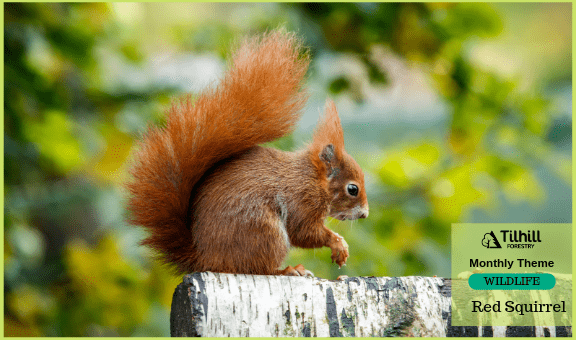The Red Squirrel is a protected species. Both the animals and their dreys are protected by law. It is illegal to carry out any forestry work close to a Red Squirrel drey, without taking steps to positively avoid damage.
Look out for:
Dreys are usually built in the fork of the main trunk or main branches of conifers – Norway spruce in particular and Scots pine being favoured species. Sitka spruce and larch trees are less likely to have dreys in them.
De-seeded cones on the ground. Not conclusive proof, as greys also eat cones, but a good indication of squirrel activity/presence.
Why?
Avoid prosecution: It is a criminal offence to ‘intentionally’ or ‘recklessly’:
• Kill, injure or take (capture) a red squirrel;
• Damage, destroy or obstruct access to any structure or place which a red squirrel uses for shelter or protection;
• Disturb a red squirrel while it is occupying a structure or place which it uses for that purpose.
DO
✔️ Immediately STOP work and inform your line manager if you see a red squirrel or a drey on your site.
DON’T
❌ Fell trees that have dreys in them.
❌ Proceed with any operations until advice has been sought.



